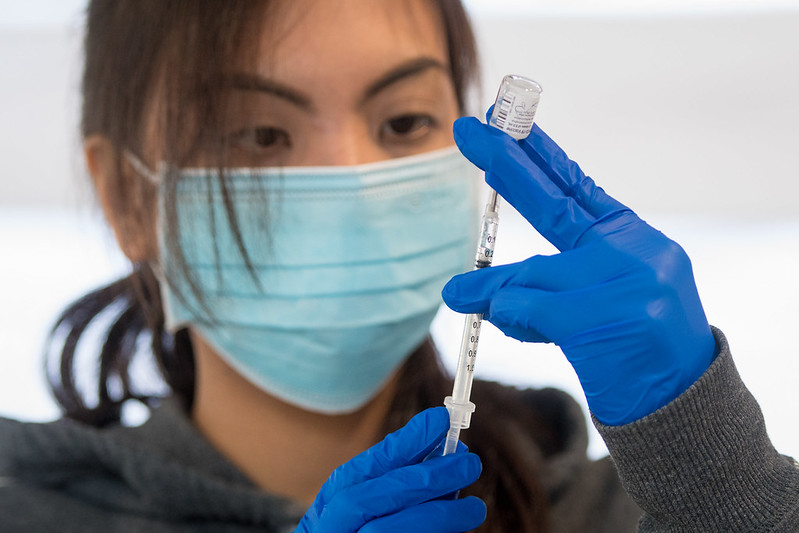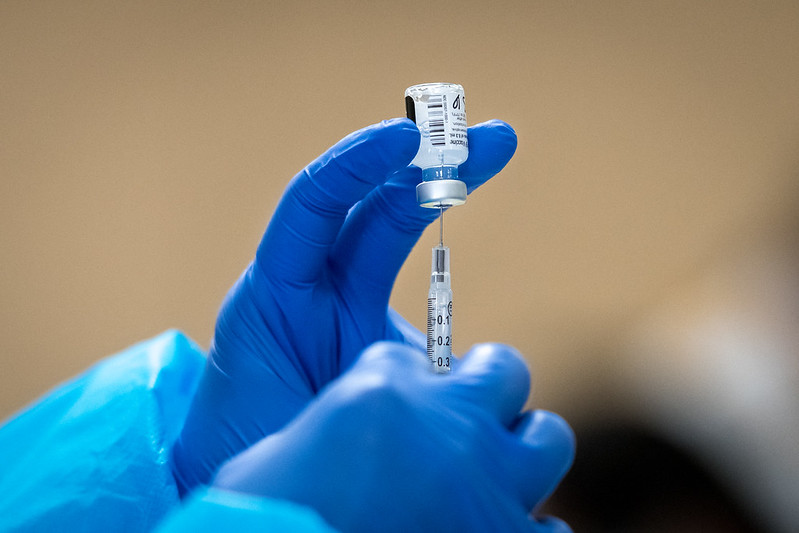
When the Moderna and Pfizer vaccines were confirmed to effectively combat the coronavirus, people across the world were overjoyed.
Lawmakers in the United States promised a swift, widespread distribution of the vaccine with a projected 20 million doses administered by the end of 2020.
But so far, as of the second week of January, only 4.5 million people have received a single dose of either vaccine, prompting public outcry and confusion over who is allowed to be vaccinated first according to the accepted timeline, how to get an appointment and when it will actually be available to the general public.
The search and discovery for a COVID-19 vaccine have been priorities since the entire world went into crisis mode following the massive and quick spread of the disease that has infected and killed millions.
Late last year, Pfizer and Moderna were the two leading names in pharma working on trials throughout 2020, and late last year, began distributing vaccines.
It was a triumphant milestone of the COVID-19 pandemic, but the vaccine rollout in the U.S. has been clumsy, confusing and controversial.
“There have been a number of bottlenecks, both at the national and local level,” Dr. William Schaffner, a professor of preventive medicine at the Vanderbilt University School of Medicine in Tennessee, told reporters in a press briefing on Wednesday, Jan. 13.
Schaffner detailed a few recorded hiccups of the vaccine being delayed to some areas due to shipping mistakes, but across the country many state and local governments, medical facilities and health care professionals were unprepared to effectively begin rolling out the doses.
“I think, quite frankly, that some of the locations thought that this was going to be just another flu vaccine campaign. They didn’t prepare sufficiently. This is more elaborate to administer in a variety of different ways and it’s really gummed up the works,” Schaffner added.
But much of the confusion and lack of structure that has so far colored this phase of the pandemic is in large part due to disregard from the country’s top office, which has provided little to no guidance over how states and local jurisdictions should go about distributing the vaccine.
From the beginning, the COVID-19 pandemic has been a battle of American ideologies, an issue that is by its nature apolitical but has become a contentious political talking point. Misinformation and fake news, largely stemming from growing extreme-right groups, have contributed immensely to the lack of progress being made in the U.S. in regard to curbing infection surges.
“I guess I’m not surprised that we’re not doing very well. The only thing we’ve gotten right is the discovery of the vaccine, so we’ve got the science part right, but we’ve also got to get the logistics, the politics and the sociological components right, too,” lamented Dr. Robert Wachter — chairman of the Department of Medicine at University of California, San Francisco — who reflected on the clumsy vaccine rollout nationally.
Wachter reflected on the previous rollouts of personal protective wear and testing and noted that it isn’t a surprise that the vaccine distribution is experiencing similar hurdles. The lack of a robust national plan has left states to figure out for themselves a streamlined process to get the vaccines out as quickly as possible, he added.
Without mentioning the Trump administration by name, Wachter touched on one of the most glaring criticisms of President Donald Trump’s handling of the COVID-19 pandemic.
He said that there wasn’t a national plan available until the recent COVID-19 relief plan from Congress allocated $1 billion to vaccine distribution.
“I think they didn’t quite appreciate the complexity of the process and they then handed out the majority of the responsibility to local institutions,” Wachter said. “It is one of the things that happens when there’s a lack of national guidance. There’s just too much wiggle room. I don’t think we treated this like the emergency that it is.”

Vaccinations for the over 65 population
Navigating the kafkaesque process of the COVID-19 vaccine rollout is no more frustrating than in California, where the confusion is rife.
This week, California Gov. Gavin Newsom announced that individuals aged 65 or older would be eligible to get vaccinated, a change from the previous plan that prioritized those with underlying health issues only.
But the state website provides no links or instructions on how to go about receiving the vaccine.
The official FAQ answers the question “How can I get the COVID-19 vaccine?” with “Most Californians will be vaccinated at community vaccination sites, doctor’s offices, clinics, or pharmacies.”
The statewide plan originally strived for an organized, tiered approach that separated groups like health care workers, grocery store workers, people with pre-existing conditions, and others that were in the first tiers of vaccine distribution.
But following a tiered system — calling residents who are part of the tiers, monitoring their vaccination status and following up with a second dose — is on a scale for which the state wasn’t prepared.
Counties across the state have kickstarted their own plans, like Orange County, which was the first county to allow anybody 65 years old or older (regardless of health) to book an appointment at the vaccination supersite at Disneyland. But scheduling an actual appointment turned out to be a disaster after the website became overwhelmed.
LA County, on the other hand, where the virus has surged exponentially for months, is continuing to prioritize only health care workers, regardless of Newsom’s announcement this week.
In regard to recent media stories that reported vaccine doses going to waste, Wachter confirmed that there have been “some” instances of that happening but not at the level that some outlets have been reporting.
“That’s not the dominant problem. The dominant problem is that doses are still at the manufacturers sitting in refrigerators and freezers, and it’s taking a long time to get those into the people that need them,” Wachter said.
He added that his facility at UCSF has distributed about 15,000 of the 18,000 doses they were given, but Wachter worries that the distribution of doses will be a lot harder in rural areas and underserved communities where access to social resources is already limited.
As reported in the Asian Journal, the COVID-19 stimulus plan unveiled by President-elect Joe Biden this week calls for widespread investments into public health, allocating hundreds of billions of dollars for a national vaccination program, which promises to speed the glacial pace of vaccinations.
The chaotic and tense atmosphere surrounding vaccine distribution asks more questions than it answers, but both Wachter and Schaffner recommended that people should consult their primary care physician about when and how to receive the vaccine.
“We know there is some capacity, potentially, for transmission. So until the full data come in we say, whether you are unvaccinated, first dose, or second dose please, continue to wear the mask, do the social distancing. Once we have the final data in, we can refine what it is that we say: the more we learn, the more we’ll tell you and the changes to the recommendations we make,” Schaffner said.






